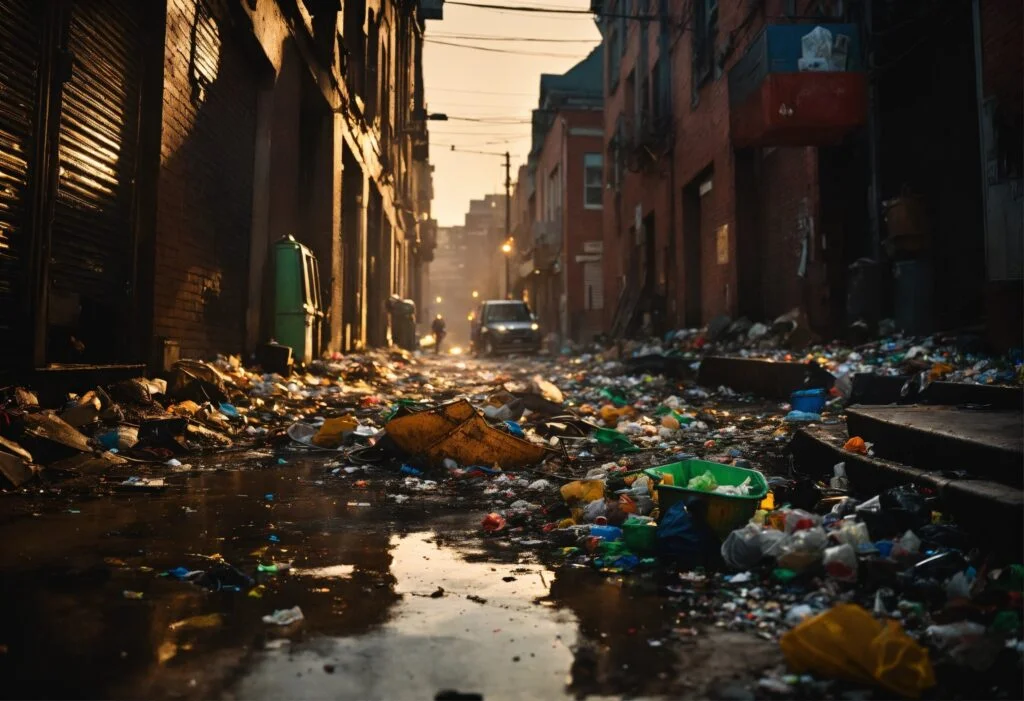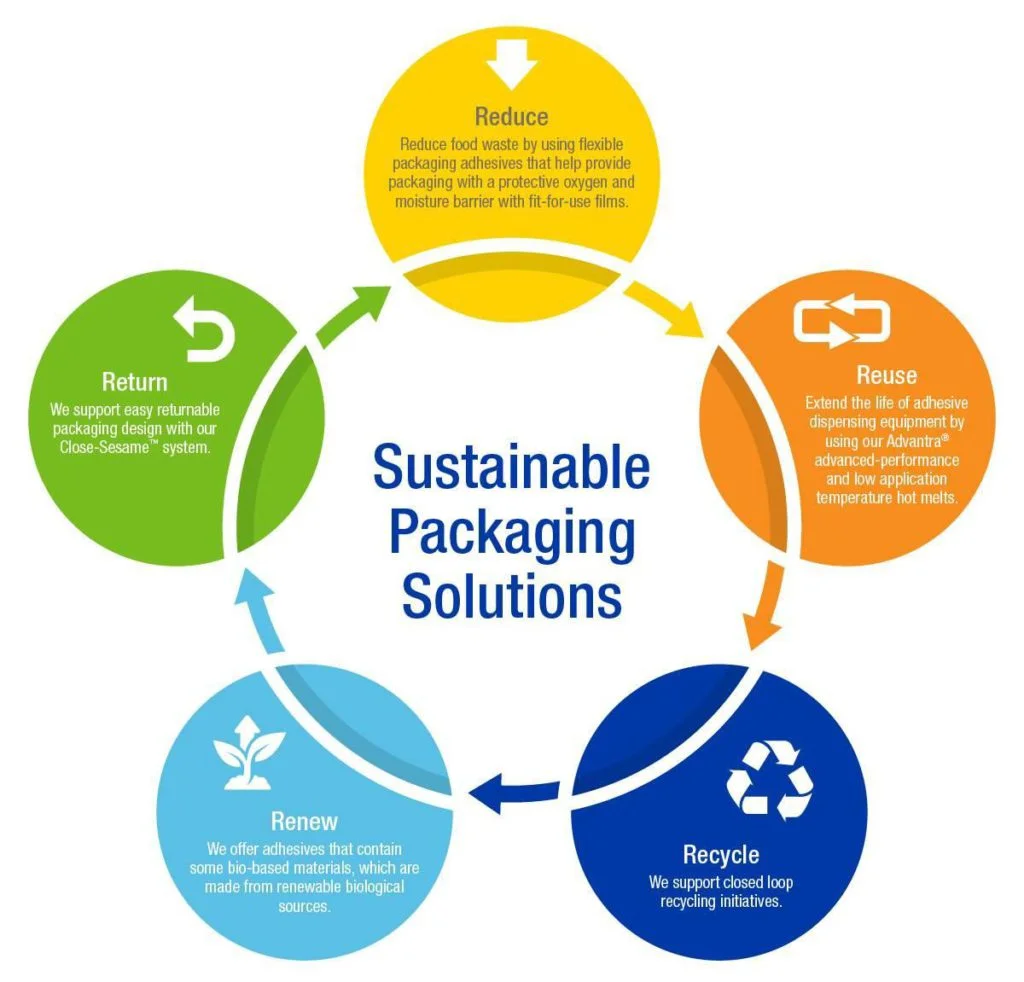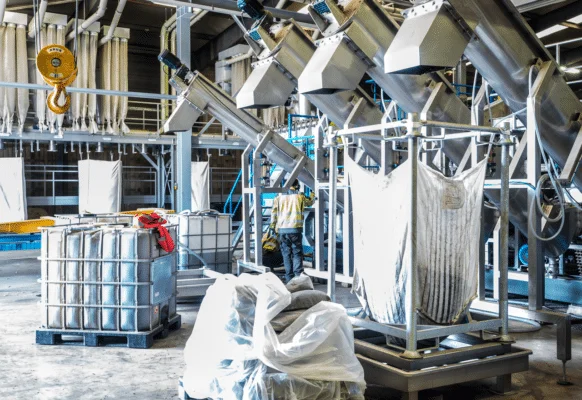I am wondering how we can make our world free from plastic. What is the solution to plastic pollution? It’s a big deal because plastic is causing trouble for our planet. Can we really do something about it in our daily lives? Let’s find out!
To keep it short, we can start fixing the plastic problem by making small changes like using less plastic, recycling more, and choosing things that are not bad for the environment.
Picture a world where our oceans are clean and there’s no trash everywhere. It’s not just a dream; we can make it happen if we all do our part.
And guess what? The ideas we’ll talk about are not just random thoughts. Experts like Jane Goodall and Sylvia Earle, who know much about the environment, say we must take action.
In this article, we’ll see what they suggest and learn simple ways to fight plastic waste daily. Let’s not just talk about it – make a real difference for a plastic-free tomorrow!
Understanding Plastic Pollution

Plastic pollution is a big problem when we have too much plastic in the environment, hurting plants, animals, and people.
There are two main kinds of plastic pollution: big pieces called macroplastics, like bags and bottles, and tiny pieces called microplastics that we can’t see easily. These little pieces end up in the air, water, and soil, causing issues we might not notice at first.
The impact of plastic pollution is really bad for nature and sea life. Plastic can release harmful chemicals, making the land and water dirty and affecting our health. Sea animals, like fish and dolphins, sometimes eat plastic by mistake, thinking it’s food.
This is dangerous because it can make them sick, and the harmful stuff can go up the food chain, affecting even more animals. There’s also a problem with abandoned fishing gear called ghost nets, which can trap and harm sea creatures.
So, understanding how severe plastic pollution is helps us find ways to stop it and create a world with less plastic waste.
Current State of Plastic Consumption
The way we use plastic these days is causing big problems for the environment.
Let’s talk numbers – globally, we made more than 368 million tons of plastic in 2019. Shockingly, this amount could double by 2034 if we keep going like this.
The big contributors to this mess are companies that make packaging, making up almost 40% of all plastic production. Things like plastic bags, bottles, and throwaway cutlery also add to the issue.
With more people shopping online, the need for plastic packaging is growing. And in some places, poor waste management means a lot of plastic ends up in our oceans and rivers.
To fix this, we need to raise awareness, change policies, and start using eco-friendly alternatives to reduce the impact of plastic on our planet.
The MECE Approach to Plastic-Free Living
The MECE (Mutually Exclusive, Collectively Exhaustive) approach serves as an effective framework for individuals striving towards a plastic-free lifestyle.
In essence, MECE signifies a methodological principle where categories are distinct (mutually exclusive) and together encompass all possible options (collectively exhaustive).
When applied to plastic-free living, this approach becomes a powerful tool for categorizing and addressing various aspects of daily life where plastic consumption can be minimized or eliminated.
By breaking down plastic usage into mutually exclusive categories, individuals can systematically identify and target specific areas for improvement without overlooking any crucial aspect.
For instance, categories may include single-use plastics, packaging, and product choices. Within each category, one can explore alternatives and make informed decisions that collectively contribute to reducing plastic consumption comprehensively.
By adopting a MECE mindset, individuals can methodically analyze their habits, making sustainable choices that significantly reduce plastic pollution.
This approach not only simplifies the transition to a plastic-free lifestyle but also ensures a well-rounded and comprehensive strategy for a sustainable future.
Reducing Single-Use Plastics
Making a plastic-free tomorrow starts with cutting down on single-use plastics.
First, let’s find alternatives to common plastic items. Instead of using disposable plastic water bottles, switch to sturdy and reusable ones made of stainless steel or glass.
Choose eco-friendly cloth bags over plastic ones for your groceries, and opt for straws made from bamboo or stainless steel. Also, pick products with less or no plastic packaging.
Second, encourage using things more than once. Say no to disposable coffee cups and bring your own reusable one. Use travel mugs and containers instead of disposable ones. Some places even reward you for bringing your own container!
Lastly, consider cloth diapers instead of disposable ones. Small changes like these add up, helping us move towards a plastic-free future.
Sustainable Packaging Solutions to Plastic Pollution

Solutions to plastic pollution start with using better packaging. Choose materials that are kinder to the environment, like biodegradable plastics, compostable packaging (made from things like corn or sugarcane), and recycled paper.
Biodegradable plastics break down more easily than regular ones, compostable packaging can be turned into compost for the soil, and recycled paper helps save trees.
It’s not just about materials; it’s also about what we pick when we shop. Look for products with less or recyclable packaging, and support businesses that care about the environment.
Simple choices by individuals can add up to a big impact, creating a future where plastic pollution is much less of a problem.
Corporate Responsibility
Companies play a big role in making our tomorrow free from plastic. They can do a lot to reduce plastic waste. Many companies are now trying to use better packaging, like materials that can break down naturally.
Some are also focusing on recycling and reusing stuff to avoid making more single-use plastics. Big companies, such as Patagonia and Unilever, are leading the way.
Patagonia uses recycled materials in their clothes, and Unilever is working to make all its plastic packaging easy to reuse or recycle by 2025.
These efforts not only help cut down on plastic pollution but also set good examples for other businesses to follow.
Community Engagement
Getting everyone involved is key to tackling plastic pollution and working towards a future without plastic. Grassroots movements are like small teams of people who care about the environment and want to reduce plastic use.
They organize activities like cleaning up beaches and teaching others about the harm caused by plastic. These efforts help raise awareness and create a sense of community responsibility.
Local initiatives are also important. When people, businesses, and local leaders work together, they can make rules to reduce plastic use, start recycling programs, and promote eco-friendly options.
By getting everyone in the community involved, we can make a big impact in the fight against plastic pollution. It’s about working together to create a wave of change that goes beyond just individual actions and shapes the way our society thinks about and deals with plastic.
Embrace sustainable choices today, so we can gift our planet a plastic-free tomorrow.
Plastic-Free at Home
Making your home plastic-free is a big step in tackling the plastic pollution problem.
Start small by choosing reusable options like stainless steel or glass containers instead of disposable plastic ones. Use durable kitchenware to cut down on throwaway plastic items.
Bring your own reusable bags for shopping and look for stores that offer products in bulk to reduce packaging waste. Get creative and make your own household products, like cleaning solutions, using simple ingredients such as vinegar and baking soda.
Swap out plastic items like toothbrushes and food containers for eco-friendly alternatives made from bamboo, metal, or silicone.
By following these tips and trying do-it-yourself alternatives, you can make your home more sustainable and contribute to a plastic-free future.
The Role of Education
Education plays a big role in helping us create a world without plastic pollution. Learning about the environment is important because it teaches us how our actions affect the planet.
If we include lessons about plastic in schools, students can understand why it’s bad and learn how to use alternatives. We can talk about where plastic comes from, why it’s harmful, and what other materials we can use instead.
Schools can also organize activities like reducing waste and recycling to get students involved. By teaching kids about the problems with plastic and showing them how to make better choices, we can raise a generation that cares about the environment and works towards a future without plastic pollution.
Government Policies and Regulations
Government rules and laws are super important in dealing with the plastic mess and making a world with less plastic.
Right now, different countries have different rules about plastic. Some ban things like plastic bags and straws, and others make companies responsible for getting rid of their products properly.
But these rules are not the same everywhere. We need to push for stronger rules to make things better faster. People can help by talking to leaders, supporting environmental groups, and joining campaigns that spread the word.
We all need to remind the government that it’s crucial to have strict rules to fight plastic pollution. Governments should always be checking and updating these rules to keep up with the plastic problem.
Good rules from the government are key to making sure we all work together for a future without so much plastic waste.
Innovations in Plastic Recycling

In the push for a plastic-free future, new and improved ways of recycling plastic are making a big difference. Advanced recycling technologies are a key part of this effort.
One cool method is chemical recycling, where plastic is broken down into its building blocks, allowing us to create high-quality recycled materials. Another promising approach is pyrolysis, where we heat up plastic without oxygen to make fuels or raw materials.
These methods go beyond the limits of regular recycling, giving us more options for different types of plastics. Exciting progress in managing plastic waste is also happening.
Innovations like small recycling units in communities and local initiatives are helping people take control of their plastic waste. When governments, businesses, and research groups team up, it leads to better recycling systems.
By getting on board with these ideas, we can all play a part in creating a sustainable, plastic-free world. It’s about using resources wisely and being mindful of our impact on the environment.
Plastic-Free Travel
Traveling without adding to plastic waste is easy with a few thoughtful choices. When you’re on the go, try using a reusable water bottle and a refillable coffee cup to cut down on single-use plastics.
Pack snacks in reusable containers instead of buying individually wrapped ones. Choose accommodations that avoid using single-use plastics, and support businesses that use eco-friendly packaging.
Also, look for eco-friendly activities and respect local environments to be a responsible tourist. By following these easy tips and supporting sustainable tourism, we can all help make our planet cleaner and healthier.
Related Articles:
Mastering Climate Science: Understanding the Fundamentals
Understanding the Contrast: Climate Change vs. Global Warming
Measuring Personal Plastic Footprint
Figuring out how much plastic you use is the first step in making a plastic-free tomorrow happen.
Keep track of the plastic stuff you use every day, like packaging, disposable things, and bottles. You can use apps on your phone to help you see how much plastic you’re using. They show you where you can cut back.
Another idea is to write down all the plastic things you use in a diary. This helps you see how your choices affect the environment.
To use less plastic, start by making small, doable goals. Look at the data from keeping track of your plastic use to know where you can make changes.
Don’t try to do everything at once—start with one thing. Maybe switch from using single-use plastic bottles to a reusable one. Or choose products with less packaging.
By reaching these smaller goals, you’ll cut down on your plastic use and create habits that stick around for a plastic-free lifestyle.
Conclusion
In conclusion, creating a plastic-free future needs everyone to work together in simple ways.
First, it’s important to understand how bad plastic pollution is and see how much plastic we use. The MECE approach helps us organize our efforts for sustainable living.
We can start by using fewer single-use plastics, choosing eco-friendly packaging, and making companies responsible for their actions. Getting communities involved, making our homes plastic-free, and learning about it are big steps too.
Governments, new ways to recycle, and being careful with plastic when we travel are also part of the solution. We must measure and reduce our own plastic use to be responsible.
Let’s make small changes in our daily lives to build a cleaner and greener future without plastic.
Together, we can leave a positive legacy for the next generations.
I hope you have found this content informative, please do comment below with your thoughts and opinions. And must subscribe to our email newsletter to get these kinds of informative content directly in your inbox.
Frequently Asked Questions
Why is plastic pollution a significant environmental issue?
Plastic pollution is a significant environmental issue because non-biodegradable plastics persist in the environment, causing harm to ecosystems, wildlife, and human health. The extensive use of single-use plastics and improper disposal contribute to the accumulation of plastic waste, leading to pollution of oceans, soil, and air.
What are the main sources of plastic pollution in our daily lives?
The main sources of plastic pollution in our daily lives include single-use plastics (such as bottles, bags, and packaging), microplastics from personal care products, and improper waste disposal.
How does plastic pollution affect marine life and ecosystems?
Plastic pollution negatively impacts marine life and ecosystems by causing ingestion, entanglement, and habitat disruption. This harms marine species, disrupts food chains, and damages overall ecosystem health.
How does social media influence contribute to the plastic-free movement?
Social media influences and contributes to the plastic-free movement by raising awareness, promoting sustainable practices, fostering community engagement, and pressuring businesses to adopt eco-friendly alternatives, thereby driving public support and behavioral change.
How can we encourage others to join the plastic-free movement in our communities?
Encourage others to join the plastic-free movement in our communities by promoting awareness through education, leading by example in reducing personal plastic usage, organizing community clean-up events, and advocating for sustainable alternatives.
 Twitter
Twitter Facebook
Facebook